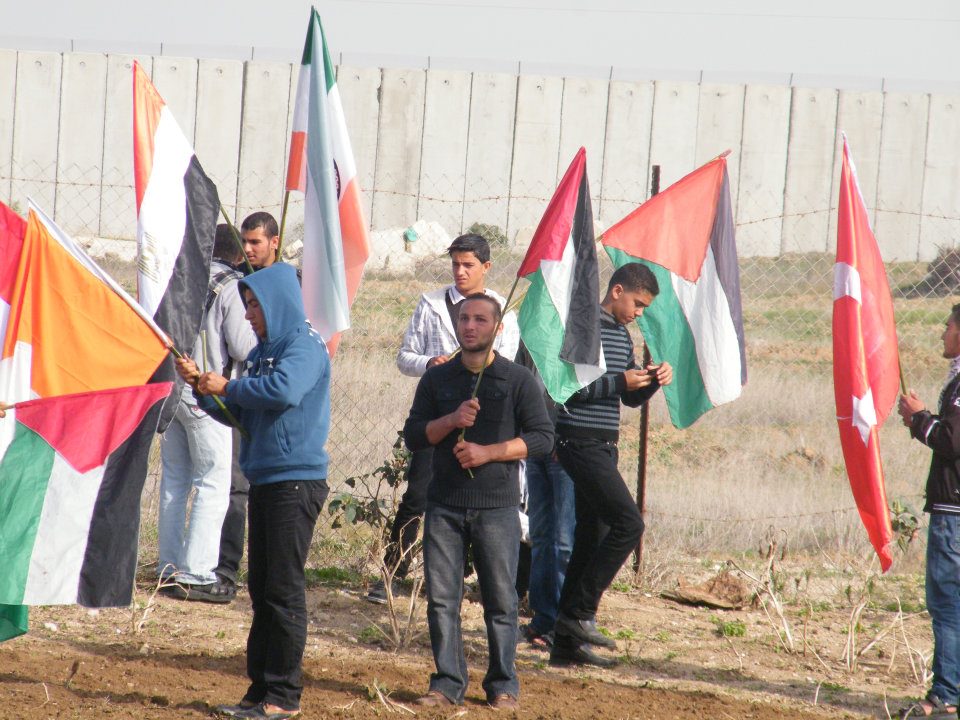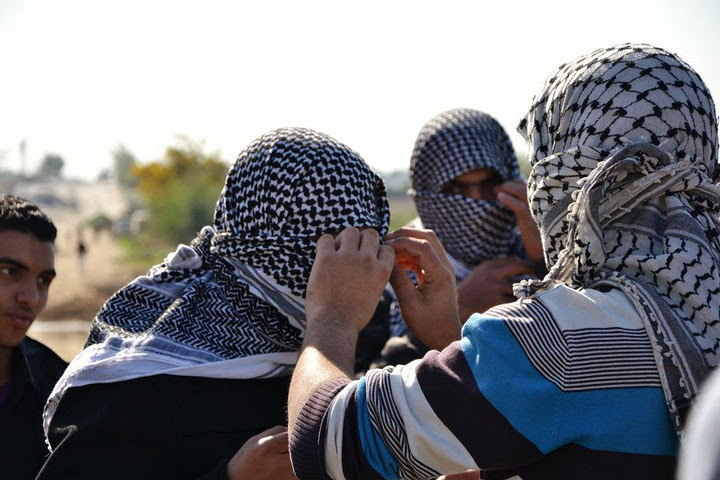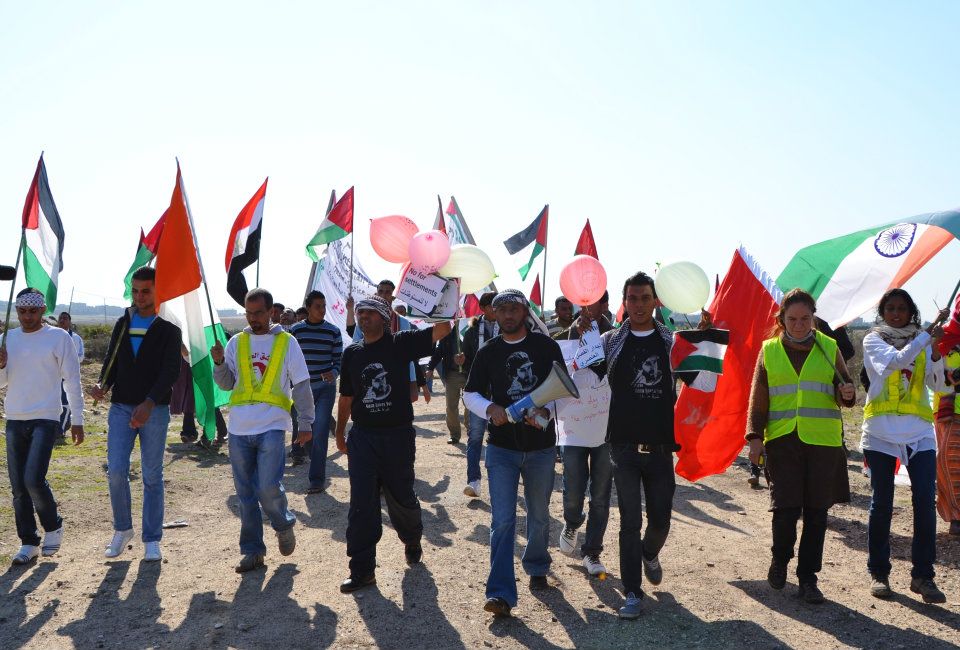Tag: Beit Hanoun Local Initiative
-
Planting the seeds of resistance and steadfastness in the no go zone
by Nathan Stuckey 13 December 2011 We set off from in front of the Beit Hanoun Agricultural College under the flags of half a dozen countries, but listening to the music of Palestine. Every Tuesday, for three years, we set off from here into the no go zone, that three hundred meter strip of death…
-
Commemorating the anniversary of the First Intifada in the no go zone
by Nathan Stuckey 6 December 2011 | International Solidarity Movement, Gaza Twenty four years ago, on December 9, 2011 a revolution began. The revolution began in Gaza, it was the First Intifada. After twenty years of Israeli occupation Palestinian resistance exploded in full force. Boycotts, demonstrations, tax refusal, all of these were the strategies of…
-
International Day of Solidarity with the Palestinian People in the no go zone
by Nathan Stuckey 30 November 2011 | International Solidarity Movement, Gaza Today, Tuesday, November 29, 2011 is the International Day of Solidarity with the Palestinian People. This day commemorates the racist and colonialist proposal of the United Nations to partition Palestine in 1947. All over the world, people stood in solidarity with the Palestinian struggle…



